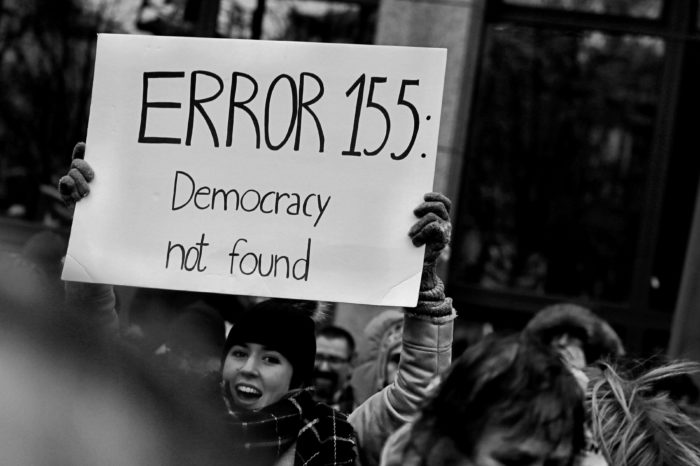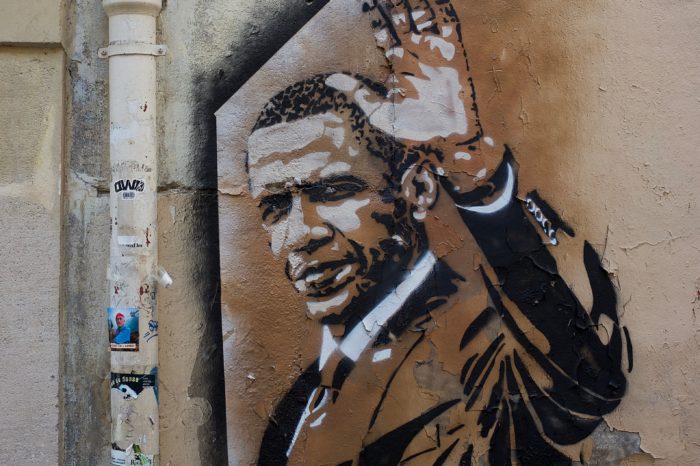How the ‘Zero-sum Struggle’ gave rise to Nationalism [Videos]
There has been much written about the polarization of politics in America and rise of nationalism particularly in Europe.
Much to the amazement of many Donald J. Trump was elected as President of the United States. His campaign slogan was Make America Great Again! At the same time the English people voted to leave the European Union. Both of these historic events inspired Hungary’s Prime Minister Viktor Orbán to state, “The era of liberal democracy is over.”
There is no better proof of the end of liberal democracy than when it’s strongest proponents state,
“[E]conomic or social change or some combination of the two” is “leading inevitably to dissatisfaction with liberal democracy and a readiness to embrace populist, illiberal, or even undemocratic alternatives.”
Sheri Berman’s article “How Liberalism Failed: After decades of relative stability, Western elites forgot how precious and precarious liberal democracy really is” in the Fall 2018 edition of Dissent Magazine provides an insightful analysis of the self-inflicted suicide of liberal democracy. Berman blames the fall of liberal democracy on two narratives:
- Economic change.
- Social change.
Berman begins by stating,
Today, the West is probably facing its greatest crisis since the end of the Second World War. Liberal democracy has faltered in Eastern Europe, is threatened by populists in Western Europe and the United States, and is being challenged by resurgent authoritarianism in Russia, China, and elsewhere.
Yoram Hazony, author of The Virtue of Nationalism, discuses the rise of nationalism globally in the below video titled “Why You Should Be a Nationalist”:
How has Liberal Democracy failed?
It has failed just as it failed in the former Soviet Union in 1989 and in Venezuela in 2018. Berman quotes The Captured Economy: How the Powerful Enrich Themselves, Slow Down Growth, and Increase Inequality by Brink Lindsey and Steven M. Teles:
“When people feel economically insecure, they grow more defensive, less open and generous, and more suspicious of ‘the Other.’ When life seems like a zero-sum struggle, gains by other groups are interpreted as losses by one’s own group.”
Nationalists want to undo the “captured economy.” President Trump’s administration has focused it’s efforts on reducing government control over the economy from unelected bureaucrats (the swamp), eliminating government regulations and ending policies that hinder individual growth and prosperity.
Berman notes that Lindsey and Teles argue:
[H]ow the misregulation of the financial sector enriched the financial elite and introduced unnecessary risks and distortions into the economy; how the expansion of copyright and patent protection has created “monopolies,” limited innovation, and showered “riches on a favored few”; how occupational licensing protects incumbent firms and favored professions and obstructs competition, entrepreneurship, and consumer interests; and how land-use regulations and zoning distort markets, hamper Americans’ ability to move where opportunity is, and instead redistribute wealth to “higher-income homeowners and the bankers who provide mortgage finance” to them.
Berman concludes, “Why has government acted in socially counterproductive and economically inefficient ways? Because it has been ‘captured’ by plutocrats who use economic resources to influence government policy in ways that rig the game even further.”
This idea of the “power of the plutocrats” is best explained in this short video featuring Columbia Law Professor Philip Hamburger:
How Immigration plays a key role in the “Zero-sum Struggle!”
Immigration has been a signature issue for President Trump and the growing numbers of nationalists in Europe, Australia, Africa and beyond. Berman notes how immigration/refugee resettlement has become a seminal issue in the Western world. Sasha Polakow-Suransky in his book Go Back to Where You Came From: The Backlash Against Immigration and the Fate of Western Democracy examines how immigration has roiled Western democracies” argues that liberal’s:
“[F]ailure to confront the real tensions and failures of integration, by pretending violent extremism and attacks on free speech were not problems, infuriated many voters and left them feeling abandoned by mainstream parties.”
When governments fail to protect the indigenous people of a nation they react by abandoning liberal Democratic policies like open borders, unfettered refugee resettlement, multiculturalism, diversity and inclusion. Tucker Carlson explains in the below video “Illegal Immigration: It’s About Power”:
Both Republicans, Libertarian, Social Democrats, Independents and Democrats need to wake up and smell the nationalism revolution. Failure to do so will cost them dearly.
RELATED ARTICLE: Ben Sasse’s Wise Counsel for a Lonely, Polarized Country
EDITORS NOTE: The videos from Prager University are republished with permission. The featured photo is by Randy Colas on Unsplash.





















